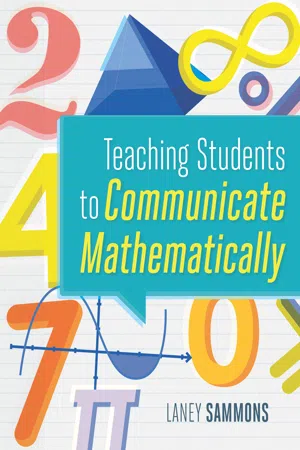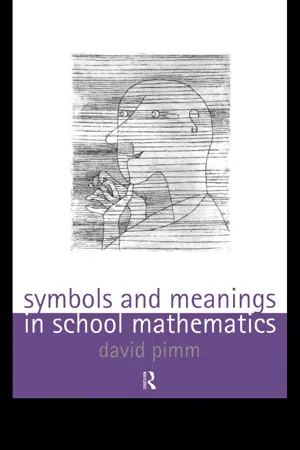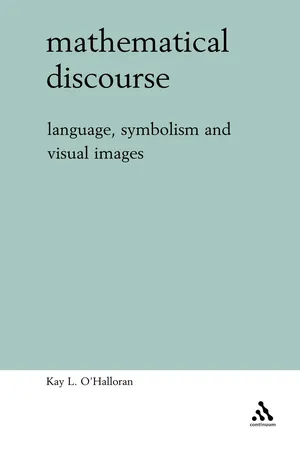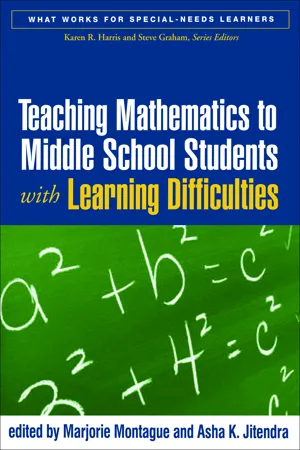Mathematics
Graphical Representation
Graphical representation in mathematics refers to the visual depiction of data or mathematical functions using graphs, charts, or diagrams. It provides a clear and intuitive way to understand and analyze mathematical relationships, trends, and patterns. By representing mathematical concepts visually, graphical representation helps in making complex information more accessible and understandable.
Written by Perlego with AI-assistance
Related key terms
1 of 5
9 Key excerpts on "Graphical Representation"
- eBook - ePub
- Laney Sammons(Author)
- 2018(Publication Date)
- ASCD(Publisher)
Teacher modeling is essential for teaching students how to use graphic representations. Although students can explore ways to use pictures to help them solve problems or grapple with mathematical concepts independently, there are many kinds of graphic representations that require more direct instruction by teachers. Teachers should model the creation of number lines, function tables, graphs, and other graphic mathematical displays.As with concrete representations, it is important that students understand the mathematical meaning of any graphic representations they use. This is especially important because graphic representations serve as a bridge to help students connect the concrete representations with which they have previously worked to abstract and real-world representations.The teacher's role in supporting students' understanding is crucial. Conversations with students "serve a mediating function, helping students discover what they know (or don't know) as they attempt to construct mathematical meaning" (Heuer, 2005, Kindle Locations 609–610, Chapter 4, Paragraph 9, Line 4). Heuer relates the story of a student who misinterpreted a graph representing the speed of a cyclist. He believed that the graph line represented the physical terrain. From his perspective, the steep slope, which in reality represented an increase in speed, was a steep hill during which time the cyclist's speed would certainly decrease. By conferring with the student as he worked, the teacher identified and corrected the student's misconception.Students' work with graphic representations offers teachers valuable insights into their mathematical thinking. While initially learners tend to replicate the strategies used when working with concrete materials, they gradually become more sophisticated with their approach to representing mathematical meaning graphically. Discussions with learners regarding their work provide an accurate and timely assessment of their mathematical understanding. - eBook - ePub
- David Pimm(Author)
- 2002(Publication Date)
- Routledge(Publisher)
A preferable term might be the less directional ‘correspondence’, which allows a more comfortable exchange of subject and predicate in a way that ‘representation’ does not. A graph can be made to correspond to an algebraic expression. An underlying theme throughout this book has been the acknowledgement of a more complex interrelation between symbols and objects, in particular with regard to the presumed secondary, ancillary nature of symbols.GRAPHING
Graphs have traditionally served as display representations because the only readily available media were static. But the static medium restriction is no longer in force! With the advent of relatively inexpensive bit-mapped graphics displays, we are now free to move and manipulate graphical objects just as we have always been free to manipulate alphanumeric objects.(Kaput, 1989, p. 185)The words ‘graph’ and ‘graphic’ contain a portmanteau of senses. One core meaning of ‘graph’ is “written or drawn” (thereby implicitly made with the hand): ‘autograph’ (self-writing, in one’s own hand), ‘graphemes’ (minimal elements of writing), but also ‘photograph’ (light drawing) or ‘lithograph’ (stone drawing). ‘Graphic’ also carries the connotation of “vividly descriptive or very clear”. Yet graphs, although drawn or made with the hand, are intended for the eye, and interpretations are certainly made by eye.This is equally true whether the graphs are corresponding to algebraic relations or are displaying statistical data. Graphs can provide representations of functions, but can also be used as mathematical models to fit numerical data. Many schoolchildren appear to gain the idea that graphs are simply a pictorial representation of a situation, akin to a literal drawing: for instance, positive gradients on distance-time graphs are seen as showing uphill walks (see Kerslake, 1982). Clement (1989, p. 82) too writes of students making a “figurative correspondence between the shape of the graph and some visual characteristics of the problem scene”. In other words, graphs can be seen as providing directly iconic images. Since all graphs have some symbolic features, their meanings are not transparent but need to be ‘read’. Graphs are the drawn result of an action, a process. But, once drawn, they come to have the status of things; static and symbolic artifacts like algebraic expressions or geometric diagrams. - eBook - ePub
- Wayne A. Wickelgren(Author)
- 2012(Publication Date)
- Dover Publications(Publisher)
10Topics in Mathematical Representation
As stated in Chapter 2, problems contain information concerning givens, actions, and goals. The first and most basic step in problem solving is to represent this information in either symbolic or diagrammatic form. Symbolic form refers to the expression of information in words, letters, numbers, mathematical symbols, symbolic logic notation, and so on. Diagrammatic form refers to the expression of information by a collection of points, lines, angles, figures, directed lines (vectors), matrices, plots of functions, graphs, and the like. Often the same information should be represented using a variety of symbolic or diagrammatic notations. In fact, diagrammatic representation is generally labeled; for example, points, lines, and cells in a matrix have symbols attached to them in the diagram. Of course, problems are stated originally in some form, often relying heavily upon verbal language. The first step in solving such a problem is to translate from the representation given explicitly or implicitly in the original statement of the problem to a more adequate representation.This chapter is concerned with selected topics in the mathematical or precise representation of information in problems. Although precise representation of the information in a problem is the first step to take in trying to solve a problem, I deferred discussing this important topic to this late chapter of the book for two reasons.First, although some general statements can be made about the representation of information in a large variety of problems, most of the principles of representation are specific to particular problem areas. Effective representation for problems from some area of mathematics, science, or engineering depends upon knowing centuries of conceptual development in the relevant areas of mathematics, science, and engineering. I doubt that mankind will ever develop a general method for determining what are the useful concepts to define in any particular area. Certainly, no such general principles of how to define good concepts are presented in this book. The best I can do is to present those types of concepts and the principles for representing them that have proved the most useful in a wide variety of areas of formal problem solving. This is what is done in the present chapter, without any claim to completeness (which would be preposterous) and with only minimal claim to logical organization of the concepts and the principles of mathematical representation. - eBook - ePub
- Heather Cooke(Author)
- 2003(Publication Date)
- Routledge(Publisher)
5Mathematical communication
This chapter is about mathematical communication in speech and text, using words and symbols, and is also about various forms of visual representations, including diagrams and graphs. It includes discussion of both speaking and writing about mathematical activity, and considers the purposes and audiences for which mathematical work is produced, as well as the conventions used. It will help you to make sense of other people's mathematical communication and to make your own more effective.REPRESENTING MATHEMATICS
Mathematics is abstract in that it is about ideas and relationships, but in order to be communicated these have to be expressed and represented in various ways. Part of learning mathematics is becoming fluent at understanding and using these representations, both for your own use and for communicating with other people (tutors, fellow students, examiners, text authors).Mathematical communication has three main ingredients: symbols, words and images (see Figure 5.1 ).Figure 5.1 Ways of communicating mathematics.Each of these three contributes to effective understanding and communication, although for any particular topic, purpose or audience one may convey greater meaning than the others. These different ways of communicating mathematics all have their uses, but it is important to be aware of their strengths and limitations. In an important sense, mathematics is a language with a formal grammar, so in mathematical communication involving verbal or symbolic text there are generally accepted conventions (for example, the use of logical connectives like ‘and’, ‘or’, ‘since’ or ‘therefore’ in correct mathematical sentences), which must be used to ensure successful and accurate communication. The combination of symbols is governed by accepted notational rules. - eBook - PDF
Mathematical Discourse
Language, Symbolism and Visual Images
- Kay O'Halloran(Author)
- 2004(Publication Date)
- Continuum(Publisher)
While static forms of graphs and diagrams in handwritten and print format have been time-consuming to produce, computer-generated visual images now encode dynamic representations with minimal effort. New systems of mean-ing such as Colour Saturation, Hue, Shading and Brightness are playing an important role in computer-generated images (Danaher, 2001; Levkowitz, 1997). The visual image has thus evolved into a dynamic display that can be easily manipulated in the same way that symbolic mathematics developed to be the semiotic that could be rearranged in print format. However, visual-izations of the continuous patterns of relations have the advantage that they encode spatial and temporal dimensions. In addition, the patterns are gen-erated with minimal effort. The development of mathematics is tied to the available technology, which has historically been limited to the pen, paper, the printing press and three-dimensional mathematical models. Computer technology extends the meaning potential of mathematics in the digitalized medium. New scientific methods arising from computer graphics may extend beyond those suggested by Colonna (1994: 191). Traditionally data is first filtered through the lens of numerical quantification (through, for example, the experiment). Following this, the data is distilled into general-ized mathematical models which are solved and visualized. This led to a de-contextualization and reduction of the complexity of the phenomenon under study: 'The strength and novelty of seventeenth century science, GRAMMAR OF MATHEMATICAL VISUAL IMAGES 155 both theoretical and experimental, was in its capacity to take things out of context and analyze their relations in ideal isolation' (Funkenstein, 1986: 75). - eBook - PDF
Experimental Methods for Science and Engineering Students
An Introduction to the Analysis and Presentation of Data
- Les Kirkup(Author)
- 2019(Publication Date)
- Cambridge University Press(Publisher)
3 Graphical Presentation of Data 3.1 Overview: The Importance of Graphs Our ability to absorb and process information when it is presented in the form of a picture is so good that it is natural to exploit this talent when analysing data obtained from an experiment. When data are presented pictorially, trends or fea- tures in the data can be detected that we would be unlikely to recognise if the data were given only in tabular form. This is especially true in situations where a set of data consists of hundreds or thousands of values, which is a common occurrence when a computer is used to assist in data gathering. Additionally, a pictorial representation of data in the form of a graph is an excellent way to summarise many of the important features of an experiment. A graph can indicate: (i) the quantities being studied (ii) the range of values obtained through measurement (iii) the uncertainty in each value (iv) the existence or absence of a trend in the data gathered (for example, plotted points may lie in a straight line or a curve, or may appear to be scattered randomly across the graph) (v) which plotted points do not follow the general trend exhibited by most of the data. x–y graphs (also known as scatter plots or Cartesian coordinate graphs) are used extensively in science and engineering to present experimental data, and it is those that we will concentrate on in this chapter. 3.2 Plotting Graphs An x–y graph possesses horizontal and vertical axes, referred to as the x and y axes, respectively. Each point plotted on the graph is specified by a pair of numbers termed the coordinates of the point. For example, point A in Figure 3.1 has the coordinates x = 20, y = 50. The coordinates of the point may be written in shorthand as (x,y), which in the case of point A on Figure 3.1 would be (20,50). To assist in the accurate plotting of data, graph paper may be used on which are drawn evenly spaced vertical and horizontal gridlines as shown in Figure 3.1. - eBook - PDF
- Doug French(Author)
- 2004(Publication Date)
- Continuum(Publisher)
Chapter 6 Functions and Graphs Harnessing this new power [of computer technology] within mathematics and school mathematics is the challenge for the 21st century. (RS/JMC, 1997, p. 6) STRAIGHT-LINE GRAPHS Straight-line graphs were discussed in Chapter 3 as one of a number of ways of introducing algebraic ideas and symbols. They are particularly attractive in this respect because they provide a ready link between numbers, symbols and pictures. An equation provides a way of encapsulating the patterns in the co-ordinates of a set of points that lie on a straight line by acting as a unique label which highlights key properties. Although a graph is an abstract representation it has a visual appeal and looks interesting, particularly when a family of related graphs is depicted. Students need to understand the links between the equation, the table of values or set of co-ordinates and the graph, and to be able to move fluently between these different representa-tions. In Chapter 3 it was suggested that introductory work on straight-line graphs should be confined to positive whole numbers and should begin by looking at a set of points on a straight line, using the pattern in the numbers to determine the equation of the line. This builds on the idea of representing the terms of a linear sequence algebraically and makes clear from the start where the equation comes from and what it means. Text books often start with equations and show students how to produce a table of values and then plot the corresponding lines. Whilst this may seem simpler as it is a more routine task, it starts from something that is unfamiliar, namely the equation, which can set up an immediate barrier because it looks strange and new and seems to have appeared for no apparent reason. Co-ordinates and their Graphical Representation should already be familiar and therefore provide a more reassuring start to a new idea. - Marjorie Montague, Asha K. Jitendra, Marjorie Montague, Asha K. Jitendra(Authors)
- 2018(Publication Date)
- The Guilford Press(Publisher)
Dia- grams are commonly portrayed as being either “a picture” or a “drawing.” In the opening vignette, Ms. Lilly referred to a diagram as being both a picture and a drawing. However, this can be misleading, and students may generate diagrams that portray only surface details rather than the relational information. Addi- tionally, attention to the production of a drawing may distract students from solv- ing the problem (Diezmann & English, 2001; Dufour-Janvier, Bednarz, & Belanger, 1987). A diagram is “a visual representation that displays information in a spatial lay- out” (Diezmann & English, 2001, p. 77). To circumvent possible confusion and mis- understanding, spend time defining what a diagram in mathematics is. The follow- ing definition may be used as an example: A diagram is a representation that shows the parts of a math word problem and how they are related. The following three points as to how diagrams can help solve word problems flow from this definition. They help us to (1) understand what the word problem is asking us to do, (2) keep track of what we are doing while we are solving the problem, and (3) check that our answer makes sense. Once the students understand what a diagram is and what its poten- tial benefits are, instruction should focus on how to generate it. Generating a Diagram Generating an appropriate diagram for a word problem can be challenging. Over time most students, given exposure to and involvement in solving a variety of problems, become proficient and efficient in generating diagrams (Dufour-Janvier, Bednarz, & Belanger, 1987; Lesh, Post, & Behr, 1987). However, for some students diagram generation continues to be problematic (Diezmann & English, 2001; van Garderen & Montague, 2003). As Ms. Lilly saw, this results in varying levels of suc- cess. Some of her students had difficulty initiating the process of diagram genera- tion, whereas others did so but had difficulty representing the relational infor- mation adequately.- eBook - PDF
- Carl Runge(Author)
- 2019(Publication Date)
- Columbia University Press(Publisher)
CHAPTER II. THE Graphical Representation OF FUNCTIONS OF ONE OR MORE INDEPENDENT VARIABLES. § 6. Functions of One Independent Variable. —A function y of one variable χ y = f(x) is usually represented geometrically by a curve, in such a way that the rectangular coordinates of its points measured in certain chosen units of length are equal to χ and y. This graphical rep-resentation of a function is exceedingly valuable. But there is another way not less valuable for certain purposes, more used in applied than in theoretical mathematics, which here will occupy our attention. Suppose the values of y are calculated for certain equidistant values of x, for instance: χ = - 6, - 5, - 4, - 3, -2 , - 1, 0, + 1, + 2, + 3, + 4, + 5, + 6, and let us plot these values of y in a uniform scale on a straight line. Draw the uniform scale on one side of the straight line and mark the points that correspond to the calculated values of y on the other side of the straight line. Denote them by the numbers χ that belong to them (Fig. 29). The drawing will then allow us to read off the value of y for any of F l o gg. the values of χ with a certain ac-curacy depending on the size of the scale and the number of its partitions and naturally on the fine-40 Graphical Representation OF FUNCTIONS. 41 ness of the drawing. It will also allow us to read off the value of y for a value of χ between those that have been marked, if the intervals between two consecutive values of χ are so small that the corresponding intervals of y are nearly equal. We can with a certain accuracy interpolate values of χ by sight. On the other hand, we can also read off the values of χ for any of the values of y. We shall call this the representation of a function by a scale. We can easily pass over to the representation of the same function by a curve.
Index pages curate the most relevant extracts from our library of academic textbooks. They’ve been created using an in-house natural language model (NLM), each adding context and meaning to key research topics.








